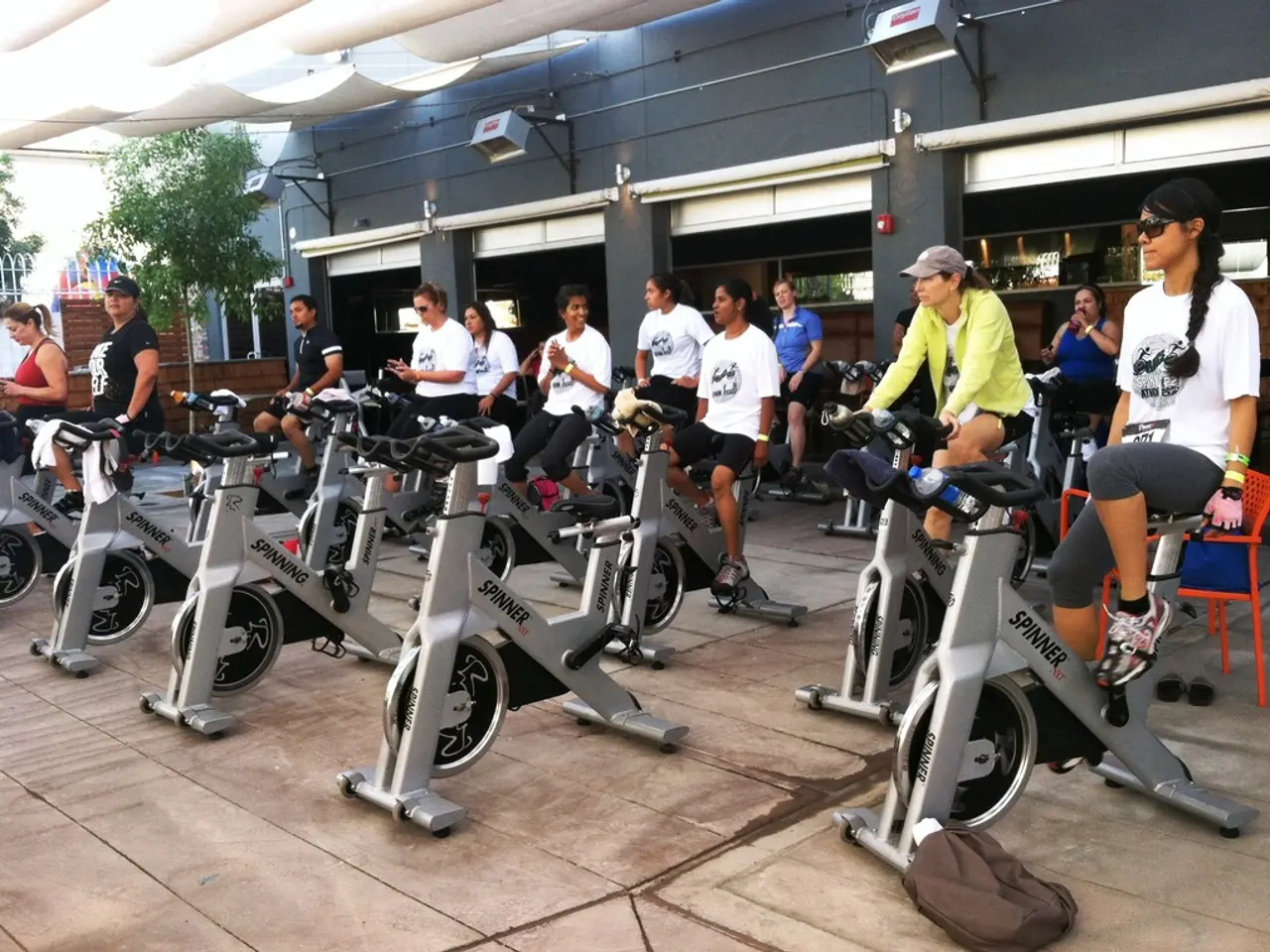Increasing Calorie Burn During Strolls: A Guide
Walking is a simple, accessible exercise that offers numerous health benefits. From improving cardiovascular health to reducing the risk of various diseases, walking is a versatile workout that can be tailored to suit different fitness levels and goals.
Incline and Calorie Burn
Walking up hills or on an incline can significantly increase the number of calories you burn. A 5% incline can boost calorie burn by 17%, while a 10% incline can increase it by 32%. This simple adjustment can make a significant difference in your calorie expenditure.
'Rucking' - A Fitness Trend
'Rucking', a fitness trend that involves walking or running with weighted vests or bags, is gaining popularity. This activity increases the demands of every step, potentially burning 200 or more extra calories per hour. 'Rucking' is not only a cornerstone of basic military training but also claimed to help improve cardiovascular health.
Walking for Weight Loss and Back Pain Relief
Walking regularly can help in reducing body weight. A 2017 study in the Journal of Nutrition found that obese and overweight people who walked 2.5 hours a week, along with following a diet, lost more weight and fat mass than people who just followed the diet. Walking regularly could also double your back pain-free time, and nearly halves the recurrence of back pain according to research published in 2024.
Improving Cardiovascular Health
The metabolic cost of walking is increased by an incline, making it a more effective workout for your heart, lungs, and muscles. Exercise scientists class slow walking as light exercise, but increasing your exertion makes it moderate exercise, which is better for your overall health. Hitting 10,000 steps a day lowers your risk of heart disease, according to a study published in 2024.
Beyond Basic Walking
Beyond walking farther, faster, or harder, you can increase calorie burn while walking by incorporating short intense intervals, adding bodyweight strength exercises, and using resistance bands or walking in water for added resistance.
Short, powerful intervals (power walking sprints) can raise your heart rate, create metabolic stress, and increase fat burning without impact like running. Incorporating strength exercises mid-walk, such as squats, walking lunges, or push-ups, combines cardiovascular and strength training, building lean muscle that raises overall calorie expenditure and elevates metabolism post-exercise.
Using resistance bands during fast interval walking enhances muscle activation and calorie burn by increasing workload on leg muscles. Walking in a pool provides resistance from water, making muscles work harder and offering joint relief. Variations like high knees, walking lunges, and side lunges in waist-deep water intensify the workout.
In summary, to increase calorie burn beyond just distance, speed, or duration:
- Add high-intensity interval bursts.
- Incorporate strength exercises mid-walk.
- Use resistance bands for extra muscle load.
- Try aqua walking for resistance and joint relief.
Forget 10,000 steps, walking just 5,000 steps is enough to lower your risk of death, according to science. Little research has been done to quantify the effects of 'rucking'.
[1] American Council on Exercise. (2021). How to Add Intervals to Your Walking Workout. [online] Available at: https://www.acefitness.org/education-and-resources/professional/expert-articles/5805/how-to-add-intervals-to-your-walking-workout/
[2] American Council on Exercise. (2021). How to Add Strength Training to Your Walking Workout. [online] Available at: https://www.acefitness.org/education-and-resources/professional/expert-articles/5806/how-to-add-strength-training-to-your-walking-workout/
[3] American Council on Exercise. (2021). How to Add Aqua Walking to Your Workout. [online] Available at: https://www.acefitness.org/education-and-resources/professional/expert-articles/5807/how-to-add-aqua-walking-to-your-workout/
- Walking up an incline is a science-backed method to significantly increase calorie burn and improve health, as a 5% incline can boost calorie burn by 17% and a 10% incline can increase it by 32%.
- Rucking, a fitness trend that involves walking or running with weighted vests or bags, is gaining popularity and can potentially burn 200 or more extra calories per hour, offering additional health benefits such as improved cardiovascular health.
- Walking regularly not only helps with weight loss by reducing body weight and fat mass, but can also provide relief from back pain, potentially doubling your back pain-free time and nearly halving the recurrence of back pain according to research.
- Beyond traditional walking, incorporating elements such as short intense intervals, strength exercises, resistance bands, or walking in water, can increase calorie burn and offer benefits like joint relief and an elevated metabolism post-exercise. This can be achieved by adding high-intensity interval bursts, incorporating strength exercises mid-walk, using resistance bands during fast interval walking, and trying aqua walking for resistance and joint relief.




